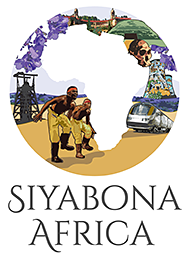
The area which is now known as Johannesburg was first inhabited by the San (bushmen) people and the Stone Age people and later by the Iron age people and waves of people came and went as the years past.
The Dutch settlers arrived in the area in the early 19th century and drove out the Matebele people who were living on the land, establishing settlements around Rustenburg and Pretoria. In 1886 gold was discovered on the Witwatersrand reef and the population suddenly exploded resulting in Johannesburg becoming the country's largest city in a very short period.
The First Gold Rush
The first gold rush occurred in the Pilgrim's Rest and Baberton area in Mpumalanga and saw gold miners travelling from all over the world in the hope of claiming their piece of land and ultimately their fortunes.A Golden Arc
The incredible amount of gold found in the Witwatersrand area was all part of a "Golden Arc" that stretches from Johannesburg all the way to Welkom. The "Golden Arc" is found where a massive inland lake was once positioned. Silt and gold deposits settled along the shore of the lake to form the gold-rich areas that South Africa is now famous for.Lucky George
Gold was first discovered in the Witwatersrand area on a lazy Sunday in March 1886 when an Australian gold miner, George Harrison stumbled across a rocky outcrop which was part of the main gold-bearing reef. He declared his claim to the government of the time and the area was declared open for mining.
Today one can find a gold monument where the original outcrop was and the area where the discovery was made is known as George Harrison Park and has been declared a national monument.
Fortune-seekers Descend
Word spread quickly about George Harrison's discovery and soon the small mining village that had cropped up where the gold was found, known as Ferreira's Camp, began to expand into a formalised settlement.
Fortune-seekers flocked from all over the world to claim their piece of land in the hope of striking it lucky and the population grew and grew and within 10 years the small village had turned into the largest town in the country, outgrowing the already 200 year old Cape Town in a few short years.
How the Town Got its Name
It is said that the new, rapidly growing settlement; Johannesburg, was named after two land surveyors and officials of the Zuid-AfrikaanscheRepublijk (ZAR) named Johannes Meyer and Johannes Rissik. It is thought that the two men combined their names and added the word 'burg' to the end, an Afrikaans word which means 'fortified city'.Historical Legacy
The South African government of the time did not believe that the gold would last of a particularly long time and therefore they only mapped out small triangular pieces of land as plots, cramming as many into a small space as possible. It is said that these small plots are the reason why Johannesburg's CBD streets are now so narrow.A War Strikes
Years passed and Johannesburg continued to grow as people from all over the world; including Europe, North America and the United Kingdom flocked to the area. The government of the Transvaal Republic controlled the area at the time and in their role they also controlled the abundance of riches and resources.
As a result of their attempts to control the resources, tensions began to develop between the foreigners and the government which eventually culminated in the South African War of 1899 - 1902. During the devastating war the government applied a sourched-earth policy; burning crops and livestock in their wake and forcibly removing thousands of Africans and Afrikaans women and children and placing them into concentration camps where at least 40 000 died or were killed.
In 1902 the British Empire seized control of the ZAR and Peace of Vereeniging was signed. The war has left a large proportion of the population homeless and destitute, the result of which were the ideal conditions for rapid urbanisation, cheap labour and extensive mining rights for the foreigners.
Paving the Way for Apartheid
In 1910 the Land Alienation Act was instituted by Lord Milner, forcing many rural black people out of their homes. These people left the rural areas and moved into the mining hub in search of employment. The National Party then gained power in 1948 and implemented the Group Areas Act which forcibly moved the black population out of the inner city and into the specified areas or townships.
One of these townships was the South West Townships (SoWeTo), an area which is now a bustling metropolitan in its own right with over 1 million inhabitants. Soweto is also the location of the Soweto Uprisings of 16 June 1976 where the black resistance movement rose up to overthrow the white Apartheid government after the police opened fire on a peaceful student march through the area.
Jozi today
Today Johannesburg, also known as Jozi, Joeys, Jo'burg or eGoli to the locals is the largest city in South Africa and is the provincial capital of the country's wealthiest province; Gauteng. There are over 4 million people living in the city region alone (Based on a 2007 survey) and the city is now one of the 50 largest metropolitan areas in the world.
Due to the gold rush of the past, Johannesburg is also the world's largest city not situated on a water source such as a lake, river or on the coastline.

